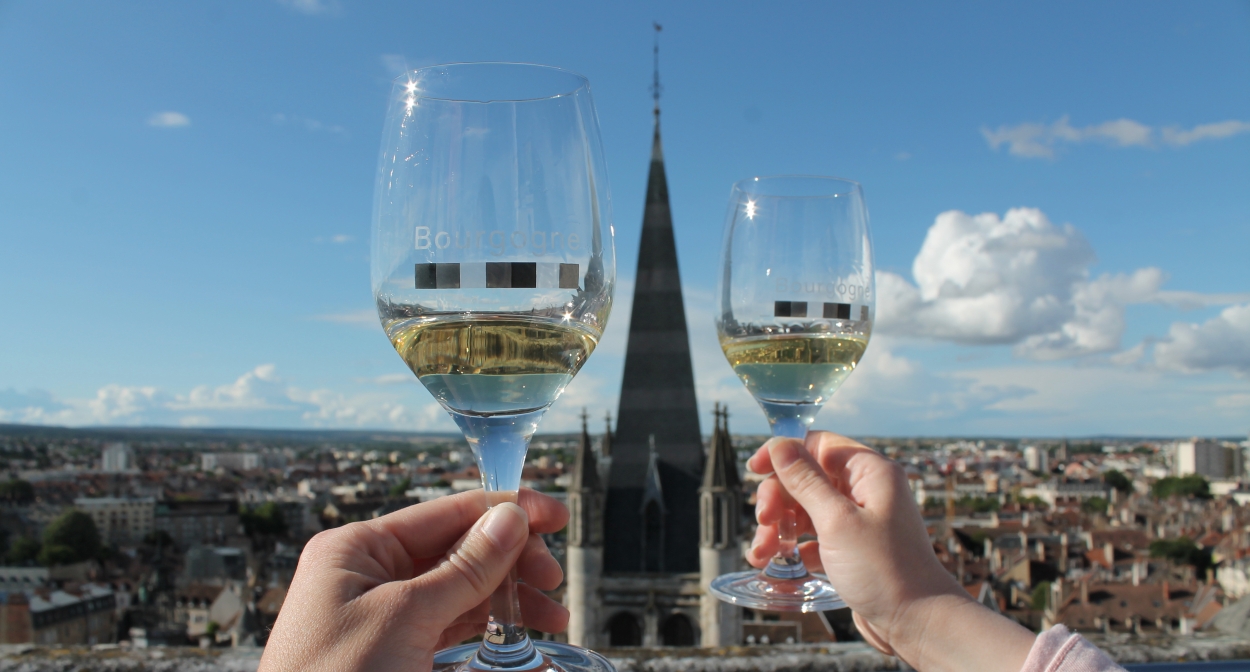Burgundy embodies the elegance of French wine. Its varied terroirs, meticulously catalogued climats and strict hierarchy make it a unique region. To fully understand a Burgundy wine, you need to know its appellations and their particularities.
The origins of Burgundy wine: between history and typicity
Wine-growing Burgundy stretches from north to south for almost 250 kilometers. This long, narrow territory is home to a wide variety of wine-growing climates. Each climate gives rise to a different wine, even a few meters apart. The notion of climat refers not to the weather, but to a precisely delimited parcel of land.
Burgundy wine is renowned for its purity. The reds come mainly from Pinot Noir, the whites from Chardonnay. Winegrowers cultivate these grape varieties with respect for local traditions. Differences in soil, exposure and microclimate directly influence the final taste.
Burgundy's four-level hierarchy of appellations
The classification of Burgundy appellations is based on a four-tier hierarchy. This structure makes it easy to identify the quality and origin of the wine.
Regional appellations
These are the most accessible. They cover the entire Burgundy vineyard. Labels often bear the word "Bourgogne" alone or accompanied by a grape variety, such as "Bourgogne Pinot Noir". These wines offer an introduction to the local style.
Local appellations
They come from specific villages such as Pommard, Meursault or Chablis. These wines better reflect the viticultural climates of their terroir. The name of the village appears large on the label. Quality goes up a notch.
Les Premiers Crus
Each village has parcels classified as Premier Cru. The name of the climat is written on the label, such as "Meursault Premier Cru Les Charmes". These wines are remarkably complex. They have great ageing potential.
Grands Crus
This is the pinnacle of the hierarchy. There are 33 Grands Crus in Burgundy, all located between Dijon and Chassagne-Montrachet. They bear only the name of the climate: Romanée-Conti, Montrachet or Clos de Vougeot. These rare wines are highly concentrated in aroma.
The fundamental role of wine-growing climates
The classification of Burgundy's climats viticoles is based on centuries of observation. Since 2015,UNESCO has listed these climats as World Heritage Sites. Each parcel reflects a unique balance between soil, exposure and altitude.
In Gevrey-Chambertin, one climat produces a powerful wine, another, more floral. In Meursault, one parcel produces a buttery white, another more mineral. This diversity creates a mosaic of taste profiles.
Burgundy wine thus takes on an intellectual dimension. To taste these wines is to travel through meticulous plots, to feel the hand of the winemaker, and to taste the history of the place.
A few emblematic examples of Burgundy appellations

Chablis
Located in the north of the region, Chablis produces dry, taut whites. The single grape variety, Chardonnay, expresses itself on soils rich in marine fossils. A perfect accompaniment to seafood.
Pommard
This Côte de Beaune village is famous for its robust reds. Pommard wines offer aromas of black fruits, spices and undergrowth. Some Premiers Crus can be kept for over 15 years.
Puligny-Montrachet
Here, Chardonnay reaches new heights. These Burgundy appellations produce fine, chiselled whites with great ageing potential. Grands Crus like Montrachet are among the world's most prestigious white wines.
Vosne-Romanée
Sought-after for its exceptional viticultural climates, this commune produces velvety, complex reds. Home to the legendary Romanée-Conti, Richebourg and La Tâche.
Why this hierarchy influences prices
The rarity of the Grands Crus, the small size of the plots and the care taken with each bottle explain the high prices. The same winemaker can produce a regional Burgundy and a Grand Cru, but terroir makes all the difference.
The best-situated climates, often on well-exposed slopes, produce concentrated grapes. Vinification remains traditional. Few commercial yeasts, no aggressive techniques. The wine speaks for itself.
Learn to read a Burgundy label
The label of a Burgundy wine always indicates the appellation. Note whether the wine is regional, communal, Premier Cru or Grand Cru. The winemaker's name appears at the bottom, along with the vintage.
On a bottle of Premier Cru wine climate, for example, you'll read: "Beaune Premier Cru Les Teurons - Domaine X - 2021". This wine comes from a single classified parcel.
Burgundy: a lesson in humility for connoisseurs
Behind every Burgundy appellation lies a history, a know-how, a terroir thousands of years old. No other vineyard takes the notion of parcel so far. The rigorous classification work carried out today enables everyone to find their way around, whether you're a beginner or an enthusiast.
If you enjoyed this article, you may also be interested in "The growing interest of the Chinese in French wine: a booming market"!





